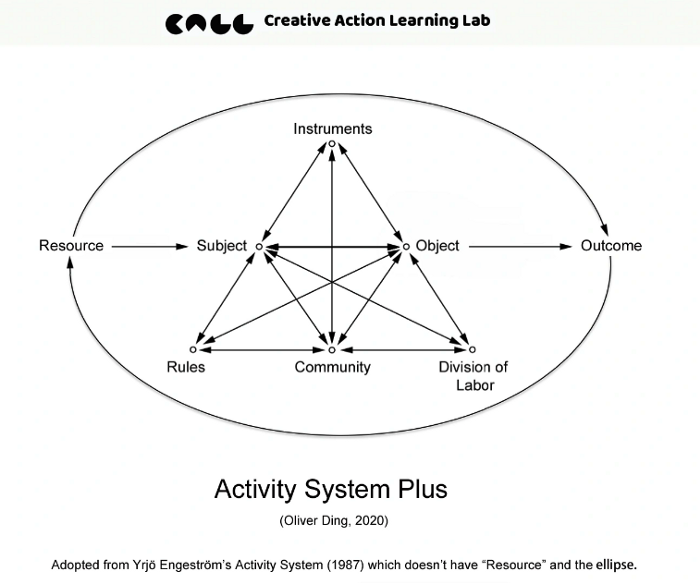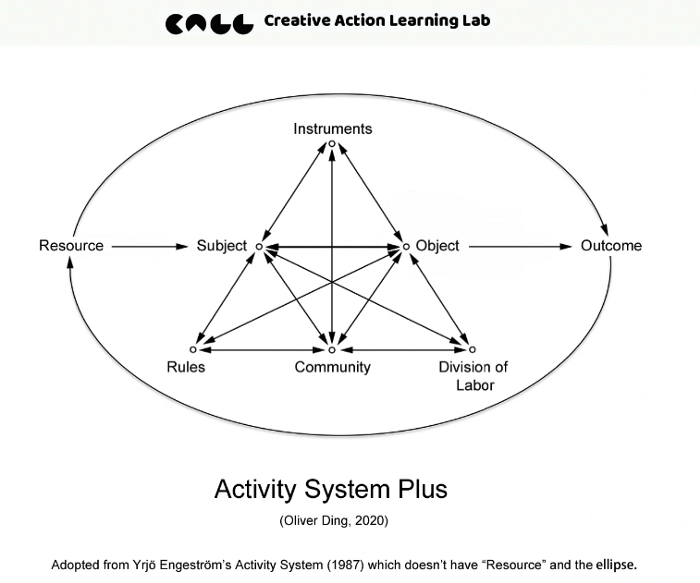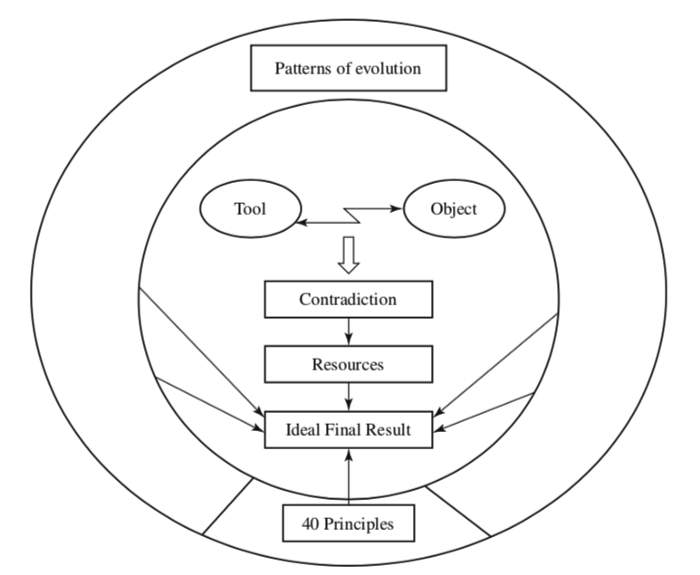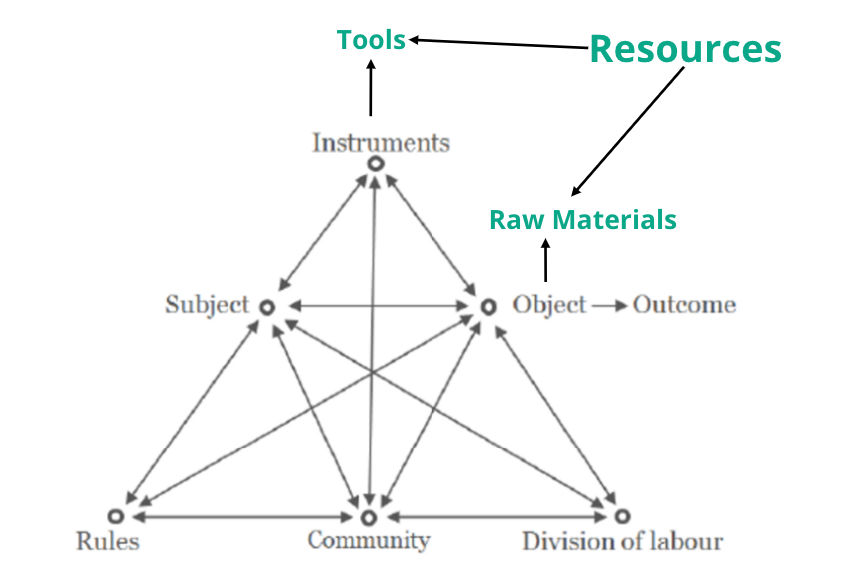Activity System Plus

A notion about Activity System Model
The above diagram is only for my personal learning exercise. I encourage you to do the same thing:
- Attach a concept to an established model.
- Detach a concept from an established model.
Once you decide to do it, you have to deliberately compare the existing version and the possible version. You have to think about the theoretical concepts behind the original model.
It leads to deep learning.
The Original Activity System Model
The above diagram is based on Yrjö Engeström's Activity System Model which is a popular theoretical framework of “Cultural-historical activity theory (CHAT)”.
From the perspective of Activity Theory, human activity or ‘what people do’ represents the basic unit of analysis when studying human behavior. The most important aspect of Activity Theory is understanding both individual and collective aspects of human practices from a cultural and historical perspective.
Yrjö Engeström upgraded the activity theory from the individual activity level to the collective activity level with a conceptual model of “activity system” in order to apply activity theory to educational settings, organizational development, and other fields (Engeström,1987).

The above Engeström’s triangle is based on the cultural-historical psychologists’ notions of mediation as individual action (subject — instruments — object) at the top of the diagram.
Engeström (1987) considered “a human activity system always contains the subsystems of production, distribution, exchange, and consumption.”(p.67), thus, he added the bottom of the triangle to the original individual triangle in order to include other people (community), social rules (rules), and the division of labor between the subject and others.
Engeström tracked back human activity to the animal form of activity. He said, “A central tenet embedded in this model is the immediately collective and populational character of animal activity and species development (see Jensen 1981).”(p.91)

The next stage is the evolution from animal to human. Engeström pointed out three major changes which are represented within the following diagram.
- Doing alone: the emerging utilization of tools.
- Being together: collective traditions, rituals, and rules.
- Doing together: division of labor between the sexes and more.

The next stage is transforming from “ecological and natural” to “economic and historical”. Engeström said, “What used to be adaptive activity is transformed into consumption and subordinated to the three dominant aspects of human activity — production, distribution, and exchange (or communication). The model suggests the possibility of analyzing a multitude of relations within the triangular structure of activity. However, the essential task is always to grasp the systemic whole, not just separate connections.”

Now, we see another major theoretical tradition behind the diagram. Engeström pointed out, that Karl Marx provided an essential analysis in the introduction to Grundrisse, “Production creates the objects which correspond to the given needs; distribution divides them up according to social laws; exchange further parcels out the already divided shares in accord with individual needs; and finally, in consumption, the product steps outside this social movement and becomes a direct object and servant of individual need, and satisfies it is being consumed. Thus production appears to be the point of departure, consumption as the conclusion, and distribution, and exchange as the middle (…).” (Marx 1973, 89. cited in Engeström, 1987, p.94)
Engeström called this diagram the Activity System. This means “an activity is a system”. Also, he argued that “…there is no activity without the component of production; only actions may be void of it.”
Expanding the Activity System Model
This is a perfect example of "Diagramming as Theorizing"!!!
However, the ideal form of the diagram doesn't give creative spaces to emerging theoretical concepts.
For example, the Activity System model doesn’t have the concept of "Environment" and the concept of “Resource”.
So, I made the "Activity System Plus" to expand the original model with the concept of "Resource".

I also added an ellipse to connect "Outcome" and "Resource". This connection refers to the notion of "Reproduction of Activity" which means an outcome of one activity could be a resource of another activity.
The concept of “Resource” is also inspired by the following diagram which is a model of TRIZ. I found the diagram from Kalevi Rantanen and Ellen Domb’s 2007 book Simplified TRIZ: New Problem Solving Applications for Engineers and Manufacturing Professionals.

The book uses one chapter titled Mapping Invisible Resources to discuss the topic of Resources.
Primary Concepts and Secondary Concepts
Each diagram only can display several concepts. Knowledge creators have to make a distinction between primary concepts and secondary concepts.
For the Activity System Model, "Mediation" is a primary concept. "Resources" and "Environments" are secondary concepts. If you want to deal with "Resources" and "Environments" in your research projects, you can understand them as "Mediation". Some types of Resouces can be understood as "Raw Materials" which are part of "Object".

If you want to use "Resources" and "Environments" as primary concepts in a knowledge framework, you have to explore other options or make something for yourself.
In 2019, I developed a framework called Life Curation which contains a module called the “Resources — Results” Analysis. The framework suggests that a person could build his or her creative containers to curate pieces of resources into meaningful results.
Later, I used the concept of "Resource" for the Lifesystem framework because it is an application of the Ecological Practice approach which emphasizes the ecological meaning of objects and environments. It is very useful for rethinking Resources and Opportunities.
